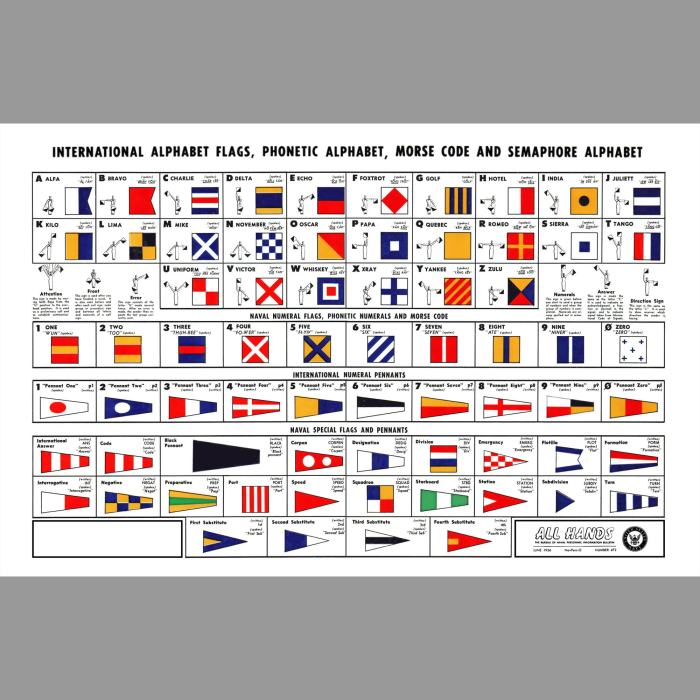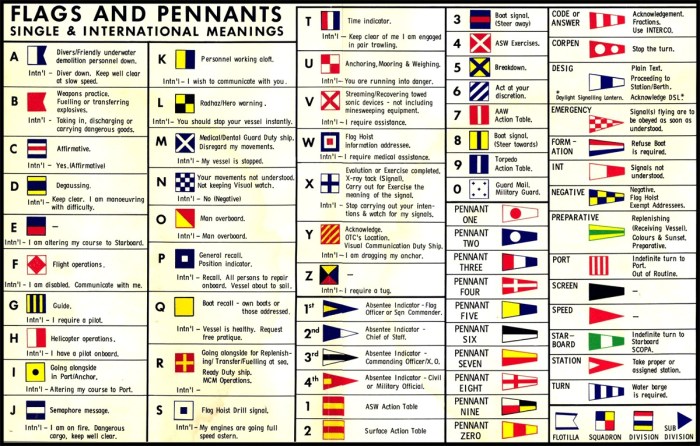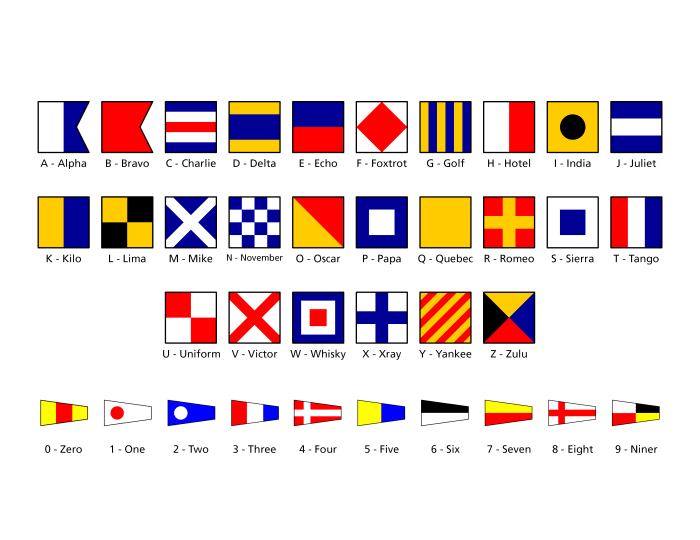Embark on a voyage into the world of US Navy flags and pennants, where vibrant colors and intricate designs tell tales of maritime heritage, communication, and international diplomacy.
From the iconic Stars and Stripes to the specialized communication pennants, each flag and pennant holds a unique story, reflecting the rich history and traditions of the US Navy.
Navy Flags: Us Navy Flags And Pennants

Navy flags serve as visual representations of a nation’s maritime presence, authority, and communication. They convey important messages and signals, contributing to the effective operation and coordination of naval forces.
Types of Navy Flags
- National Ensign:Represents the nation’s sovereignty and is flown on all naval vessels.
- Naval Jack:Flown from the bow of a naval vessel when anchored or moored.
- Commissioning Pennant:Indicates that a naval vessel is in active service.
- Decommissioning Pennant:Signifies that a naval vessel is being retired from active service.
- Admiral’s Flag:Indicates the rank and presence of an admiral on board a vessel.
- Signal Flags:Used for communication between naval vessels and with shore stations.
Protocols and Regulations
The display of navy flags is governed by strict protocols and regulations. These ensure proper etiquette, respect for national symbols, and clear communication at sea.
- The national ensign is always flown from the stern of a vessel.
- The naval jack is flown from the bow of a vessel when anchored or moored.
- The commissioning pennant is flown from the mainmast of a vessel in active service.
- The decommissioning pennant is flown from the mainmast of a vessel being retired from active service.
- Admiral’s flags are flown from the mainmast of a vessel when an admiral is on board.
- Signal flags are used in accordance with established codes and procedures.
Pennants

Pennants are long, narrow flags used by the navy for communication and signaling. They come in various types, each with a distinct purpose and symbolism.
Signal Pennants
Signal pennants are used to convey messages between ships and shore stations. They are typically made of colored bunting and have letters, numbers, or symbols printed on them. Each pennant represents a specific letter, number, or command, and combinations of pennants can be used to form words, phrases, or sentences.
Command Pennants
Command pennants are flown by ships to indicate the rank or position of the commanding officer. They are typically long and narrow, with a triangular or swallow-tailed shape. The color and design of the pennant vary depending on the rank of the officer.
Directional Pennants
Directional pennants are used to indicate the direction of the wind or current. They are typically made of a lightweight material, such as nylon or silk, and are flown from a mast or spar. The shape and color of the pennant vary depending on the direction it is indicating.
Ceremonial Pennants
Ceremonial pennants are used for decorative purposes and are often flown on special occasions. They are typically made of a rich fabric, such as velvet or silk, and are often embroidered with gold or silver thread.
Examples of Pennant Usage
Pennants are used in a variety of ways in the navy, including:
- To send messages between ships and shore stations
- To indicate the rank or position of the commanding officer
- To indicate the direction of the wind or current
- To decorate ships and other naval facilities
History and Evolution

Navy flags and pennants have a rich and storied history, dating back centuries to the earliest days of naval warfare. Over time, their designs and meanings have evolved to reflect changes in technology, warfare, and the role of navies in society.
Origins and Early Use
The earliest known navy flags and pennants were used by ancient civilizations such as the Egyptians, Greeks, and Romans. These flags were often simple in design, consisting of a single color or symbol, and were used to identify ships and communicate with other vessels in the fleet.
Development During the Age of Sail
During the Age of Sail, navy flags and pennants became more elaborate and standardized. The use of flags to signal between ships became increasingly important, and navies developed complex systems of flags and pennants to convey a wide range of messages.
Influence of Technology and Warfare
The development of new technologies, such as steam power and radio, had a significant impact on the evolution of navy flags and pennants. With the advent of steam power, ships were no longer reliant on wind to sail, which allowed them to maneuver more easily and communicate with each other over greater distances.
The invention of radio also had a major impact on naval communications. Radio allowed ships to communicate with each other and with shore stations over long distances, reducing the need for flags and pennants for signaling purposes.
International Usage

Navy flags and pennants are not just symbols of national pride but also play a crucial role in international communication and diplomacy. Their usage varies across countries, but certain protocols and regulations govern their display to ensure clarity and avoid misunderstandings.
International Protocols and Regulations
The International Code of Signals, maintained by the International Maritime Organization (IMO), provides standardized protocols for displaying navy flags and pennants. These protocols aim to facilitate communication between vessels of different nationalities, especially in distress situations or when conveying important messages.
Role in International Diplomacy and Cooperation
Navy flags and pennants serve as visual representations of a nation’s naval presence and authority. They are used to identify warships, signal intentions, and communicate with other vessels. During diplomatic visits or joint exercises, the display of navy flags and pennants helps foster goodwill and cooperation between nations.
Comparative Usage in Different Countries, Us navy flags and pennants
While the basic principles of navy flag and pennant usage are similar across countries, there are some variations in their specific designs and meanings. For instance:
- United States:The US Navy uses a wide range of flags and pennants, including the iconic “Stars and Stripes” national flag, the “Jack” (a blue field with 50 white stars), and various signal flags.
- United Kingdom:The Royal Navy’s flags and pennants include the White Ensign (a white field with the Union Jack in the canton), the Blue Ensign (a blue field with the Union Jack), and the Red Ensign (a red field with the Union Jack).
- France:The French Navy uses the Tricolore (a vertical tricolor of blue, white, and red) as its national flag, and various pennants for signaling purposes.
These differences reflect the unique naval traditions and histories of each country.
Understanding the intricate world of US Navy flags and pennants requires meticulous attention to detail. To enhance your knowledge further, I highly recommend referring to topic 6: assessment form a for a comprehensive analysis. By delving into this resource, you’ll gain valuable insights into the significance and usage of these maritime emblems, enriching your understanding of US Navy protocols and traditions.
Design and Symbolism

Navy flags and pennants employ a distinct visual language that conveys a wealth of meaning. Their design elements and symbolism are meticulously crafted to reflect the values, traditions, and aspirations of the navy.
Colors, shapes, and patterns play pivotal roles in the symbolism of navy flags and pennants. Blue, a color associated with the sea, is frequently used to represent the maritime domain. White often symbolizes purity, while red signifies courage and sacrifice.
The use of gold or yellow may indicate honor and excellence.
Shapes and Patterns
Shapes and patterns also carry significant meaning. The rectangular shape of many flags represents stability and order, while triangular pennants convey speed and agility. Stripes and stars are common design elements, representing discipline, unity, and celestial guidance, respectively.
FAQ Overview
What is the purpose of a Navy flag?
Navy flags are used to identify naval vessels, indicate nationality, and convey messages or commands.
What is the difference between a flag and a pennant?
Flags are typically larger and used for identification, while pennants are smaller and used for communication or signaling.
What is the history of US Navy flags and pennants?
The history of US Navy flags and pennants dates back to the early days of the American Revolution, with the first official Navy flag being adopted in 1777.